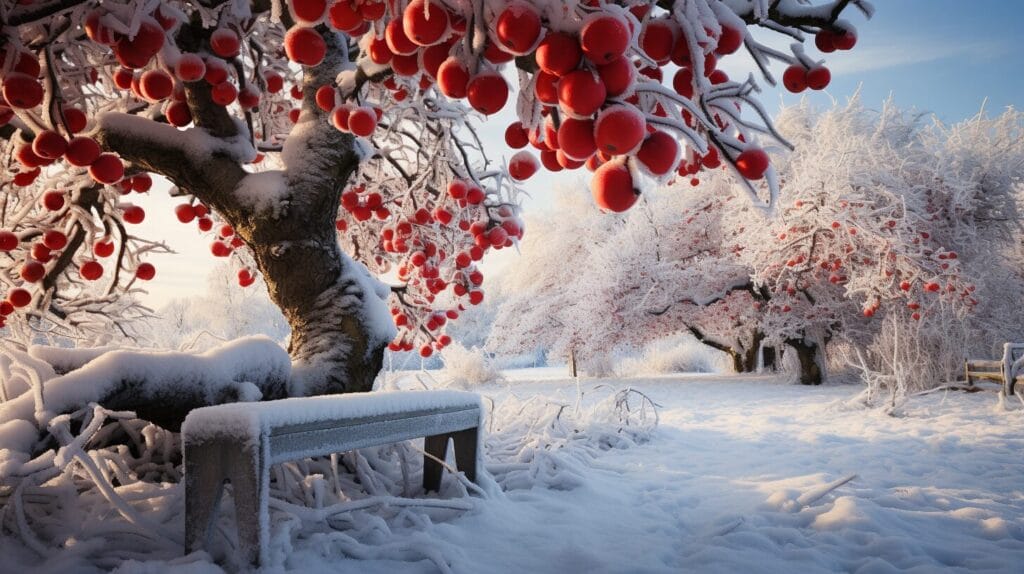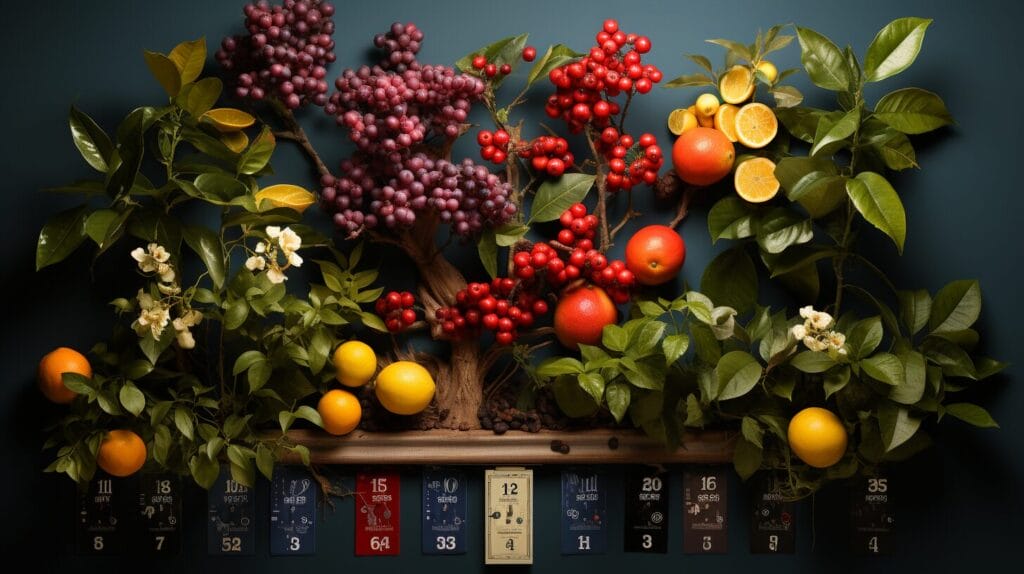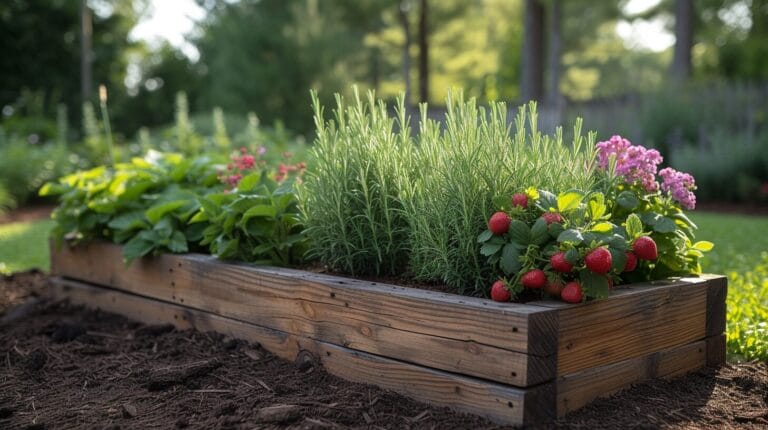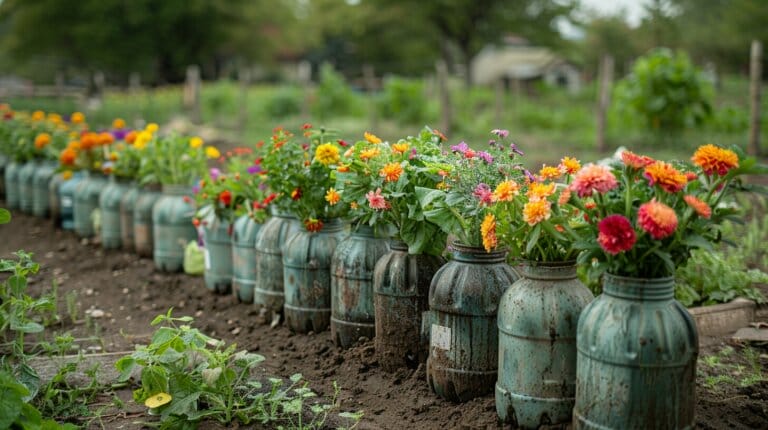Choosing The Right Fruit Trees By Hardiness Zone: A Comprehensive Guide in 2024
Selecting the perfect fruit trees that suit their best growth zones merges our passion for horticulture with the benefits of nature. The prosperity of a fruit orchard heavily depends on the tree’s harmony with its surroundings, and the level of attention and care it receives.
This guide will help you navigate the complexities of hardiness zones, ensuring that the fruit trees you plant stand the best chance of flourishing. Uncover the factors that can make or break your garden’s productivity, and together, let’s plant the seeds for a future filled with the sweetest, home-grown rewards.
Key Takeaways
- Hardiness zones categorize regions based on climatic conditions and determine which fruit trees will thrive in a garden.
- Lower hardiness zones (2-4) have harsh winter temperatures, but apples, pears, and cherries are top choices for cold climates.
- Mid-range hardiness zones (5-7) allow for a broader selection of fruit trees, including peaches, figs, and various apple cultivars.
- Warmer hardiness zones (8-10) require heat-tolerant fruit trees such as citrus trees, mangoes, and guavas, while figs and pomegranates can tolerate heat and occasional cold snaps.
Understanding Hardiness Zones and Their Impact on Fruit Trees

Hardiness zones are geographical designations that categorize regions based on their climatic conditions. They are crucial in determining which fruit trees will thrive in your garden. These zones are mapped out by the United States Department of Agriculture (USDA) and are primarily based on the average minimum temperature of an area.
The concept is simple: if a tree isn’t cold-hardy enough for our zone, it may not survive the winter. Conversely, planting a tree that’s too hard for a warmer zone could mean it won’t get the necessary period of dormancy during a mild winter.
Choosing the Right Fruit Trees for Lower Hardiness Zones (Zones 2-4)

The cooler climates found in Zones 2-4 experience harsh winter temperatures. It’s crucial to choose trees that are cold-hardy and can survive the region’s freezing conditions. When looking for fruit trees that will thrive in these cold climates, apples, pears, and cherries often top the list.
The concept of microclimates within our landscapes is also worth exploring, especially as it relates to growing fruit trees in different zones like zone 3 and zone 4.
By taking advantage of sheltered spots that may retain heat better than other areas, or employing techniques such as planting on south-facing slopes, we might be able to expand our options slightly beyond what’s typically recommended for our zone.
Options for Mid-Range Hardiness Zones (Zones 5-7)

Zones 5-7 reveal a wealth of options, including peaches, figs, and various apple cultivars that thrive in these mid-range climates. Here are some top picks for zones 5-7:
- Peach Trees: Varieties like ‘Reliance’ or ‘Redhaven’ are known for their cold hardiness and delicious fruit.
- Fig Trees: ‘Chicago Hardy’ and ‘Brown Turkey’ figs can do well, especially with some winter protection.
- Apple Trees: Look for cultivars such as ‘Honeycrisp’, ‘Fuji’, or ‘Gala’ that are adapted to a wide range of conditions.
- Pear Trees: ‘Bartlett’ and ‘D’Anjou’ pears are popular choices that handle the climate well.
- Cherry Trees: ‘Montmorency’ and ‘Sweetheart’ cherries are both sweet and tart options that are suited to these zones.
Exploring Fruit Trees Suitable for Warmer Hardiness Zones (Zones 8-10)

In warmer climates of zones 8-10, selecting fruit trees that not only tolerate but thrive in the heat becomes essential. Citrus trees are an excellent choice for these zones.
They love the heat and can produce bountiful crops of oranges, lemons, limes, and grapefruits. Tropical fruit trees like mangoes and guavas are also well-suited for these zones, especially zone 10, which offers a climate closest to their native environments.
How Can I Determine Which Fruit Trees Will Thrive in Zone 5?
Expert Tips on Picking the Right Fruit Tree for Your Specific Hardiness Zone

To ensure you pick the perfect fruit tree for your garden, consider your hardiness zone, soil quality, sunlight, and space constraints. Understanding your zone, considering soil and sunlight, spacing appropriately, and selecting local varieties are key factors to consider.
Additionally, be seasonally savvy and plant your trees during the dormant season, typically late winter to early spring, depending on your zone.
Conclusion
Picking the right fruit trees by hardiness zone is just the start; caring for them is where the magic truly happens. Embrace your local climates and watch your garden dreams flourish. Happy planting, everyone!
Frequently Asked Questions
How does climate influence the type of fruit trees I can grow?
Climate is a vital factor in the successful growth of fruit trees. Each type of fruit tree has a designated hardiness zone, referenced in USDA hardiness zones, where it grows best. Hardy-to-zone values give the range of areas each tree can adapt to. To know what fruit trees will grow in your area, you first have to find your zone.
Can I grow cherry and pear trees in Zone 2?
Zone 2 has a colder climate, and only very hardy fruit trees can survive. Some specific varieties of sour cherries and pear trees could potentially thrive in Zone 2 with the right care and a little luck. Remember, it’s always best to consult with a local nursery or experienced gardener in your area for personalized advice.
How to grow fruit trees by hardiness zone successfully in Zone 5?
In Zone 5, temperatures are farther from the coldest and offer a broader selection of trees to grow. You could opt for apple, pear, plum, cherry, and even some varieties of peach. For any fruit tree, ensure they are positioned in full sun and get ample water.
Which fruit trees grow best in zone 7?
Zone 7 offers a significantly milder climate, which allows for a larger variety of fruit trees to grow. Apple, pear, cherry, and plum trees will grow well in Zone 7, and even citrus trees like orange trees can be grown, given the right protection during occasional frosts.
How do I know which USDA zone I’m in?
To find your zone, you can refer to the USDA Plant Hardiness Zone Map, which categorizes different areas based on the average extreme minimum temperature. Having this information will help you determine what fruit trees will grow best in your local conditions.







